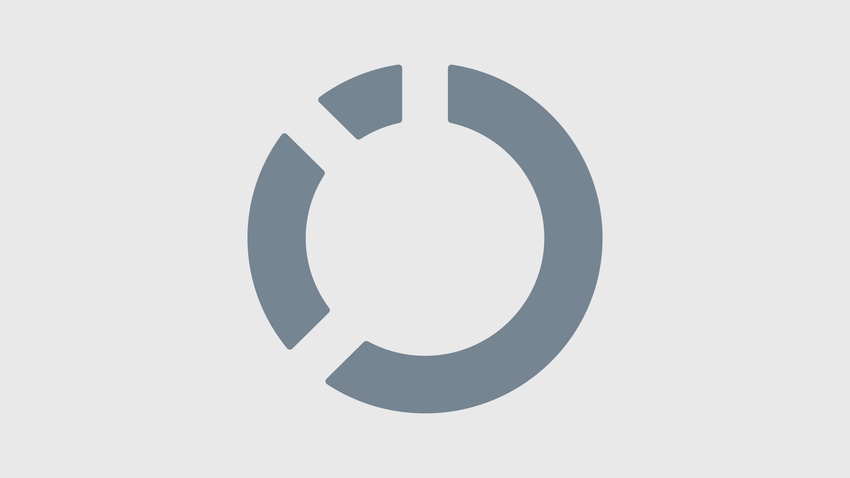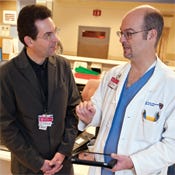BIDMC, the No. 1 company in the <i>InformationWeek 500</i>, gives more clinicians access to faster queries.

Like all the hospitals affiliated with Harvard Medical School, Beth Israel Deaconess Medical Center aims to be the best of the best. A closer look suggests the hospital is achieving that lofty goal partly by taking shrewdly calculated technology risks.
A centerpiece of BIDMC's IT-based innovation is a new medical informatics platform called Clinical Query. To appreciate its value, you need to understand the current healthcare environment.
With the push to reform medical care in the U.S., providers are expected to improve quality while reducing costs. And clinicians are under pressure to focus not only on the care of the individual patients sitting in front of them, but also the larger population with the same disease or condition--so-called population health management. That mandate will require much more sophisticated data analytics tools.
Enter Clinical Query. John Halamka, BIDMC's ball-of-fire CIO, refers to it as a clinical trials/clinical research business intelligence system. It's a search engine married to a huge database of patient records that lets hospital employees test hypotheses about what causes a disease, for instance, or test which drug, diet, or lifestyle variables may reduce the risk of developing one.
The repository contains 200 million data points on 2.2 million patients, including medications taken, diagnoses, and lab values. The query tool is capable of navigating 20,000 medical concepts through the use of Boolean expressions. All the data has been mapped to standard medical language codes. Diagnoses, for instance, have been mapped to ICD-9; medications to RxNorm codes; lab data to Logical Observation Identifiers Names and Codes (LOINC).
So with the help of Clinical Query, a clinician or researcher might search the records to find out how many patients with breast cancer also take ACE inhibitors, a class of drug used to treat high blood pressure. If the results reveal a strong correlation between the drug and the malignancy, the hospital could do a deeper analysis and set up a formal research project to investigate the link. The ultimate goal is to discover a new medical intervention that would improve the survival of the entire population of breast cancer patients.
Not only would Clinical Query do the legwork to detect a link between breast cancer and ACE inhibitors, but it would also take a research hypothesis to the next stage, what Halamka calls the "drink" stage after the initial "sip" of data.
"Suppose I actually want to take the data on the 66,000 patients I just identified in my search and enroll them in a clinical trial," Halamka explains. "Once the institutional review board gives approval for that, we can take this query and automatically write letters to the primary care physicians to enroll these patients in the trial." It's a huge time saver.
Access to Clinical Query, as well as to the other clinical apps in the BIDMC system, is simplicity itself. A single sign-on protocol gives physicians access to 146 clinical apps--including an order entry app, a performance manager governing safety and quality, an emergency department dashboard, PeopleSoft ERP, and thousands of professional journals--as well as the 2 million-plus patient records. Other employees and students get a set of sign-on rights depending on their role in the organization.
The internally developed software under the Clinical Query hood is based on an open source system known as Informatics for Integrating Biology & the Bedside. And because the platform pulls data from multiple clinical and administrative applications, the hospital's IT team had to normalize the data with the use of the aforementioned vocabularies, LOINC, ICD-9, and RxNorm.

InformationWeek 500 Top 5: BIDMC - Self-service makes BIDMC's medical platform a standout, says Halamka
Self-service makes BIDMC's medical platform a standout, says Halamka"What's unique about Clinical Query is that it's completely self-service," Halamka says. "I didn't have to go out and hire an analyst. I didn't have to get special permission to get access or approval from our [institutional review board] to use it."
Clinical Query is only one part of BIDMC's BI anatomy. Expert analysts at the hospital also do more sophisticated mining, looking at raw patient data and, in some cases, evaluating the quality of data that feeds Clinical Query and other apps. The hospital's IT team has reached out beyond its 2 million patients to look at community-wide data sources to find ways to manage the health of larger patient populations.
BIDMC runs one of 32 Pioneer Accountable Care Organizations recently started nationwide, taking commercial electronic health records software in doctors' offices, such as eClinicalWorks, GE Centricity, and more specialized programs, and writing specifications "to download data elements to a common community repository to do population analytics," Halamka says. Once again, the goal is better, cheaper patient care--what policymakers now call accountable care.
Halamka is also a driving force behind creating a state-funded, privately managed, cloud-based health information exchange in Massachusetts. The HIE is contracting with 16 EHR vendors to service doctors across the state via a massive interconnected network, due to go live in October.
Early Adopter
Other academic medical centers have endeavored to use patient records to feed their clinical research machine, but the information feeding Clinical Query is more comprehensive. The data on patients' medication use, for example, is more complete than found elsewhere because of the way clinicians at BIDMC are required to track patients' drug intake. Similarly, because BIDMC has been using an EHR system since 1985--long before the industry got hip to EHRs--it has an impressive amount of longitudinal data per patient.
Clearly, the culture at BIDMC is to be a first IT mover. Halamka is proud of the fact that it was the first hospital "to go live with iPads in clinical care. We did it one hour after they were invented." BIDMC staffers went down to the Apple store, bought the tablets, and put them to use in the hospital's emergency department. That may not sound especially bold in today's healthcare environment, but in early 2010 it was fearless.
More cutting edge was the hospital's custom EHR system, called Online Medical Record. Halamka is quick to point out: "We built it ourselves. I wrote part of it. It's Web-based, cloud-hosted, runs on tablets. How many EHRs in the world have those characteristics?"
In practical terms, that means physicians can easily access a patient's text records and images from anywhere in the world. And all of the hospital's patients can likewise get access to all of their data. They can also have secure email conversations with their doctors and renew prescriptions online, even see their doctors' calendars to book appointments most convenient for them (rather than their clinicians).
Getting Clinical Query up and running did pose some challenges, but the stumbling blocks were more policy-related than technological. The Health Insurance Portability and Accountability Act requires that providers keep patients' medical data private or risk large fines. Letting employees access 2 million patients' confidential records therefore required that BIDMC put in place some serious safeguards to remain compliant.
De-identifying the records was the most obvious precaution, but the nature of the Clinical Query search engine required more.

InformationWeek 500 Top 5: BIDMC - BIDMC was the first hospital to use iPads in clinical care, says Halamka (left, with Dr. Henry Feldman)
BIDMC was the first hospital to use iPads in clinical care, says Halamka (left, with Dr. Henry Feldman)Suppose for argument's sake that a BIDMC employee wants to snoop on his neighbor. The neighbor happens to have one blue eye and one green eye (a unique identifier), and the employee wants to know if he's on anti-psychotic meds. The employee could create a query that lists all blue-eyed, green-eyed people taking mental health medication, in which case there's a good chance the neighbor's confidential data would show up. To prevent such unlawful snooping, Clinical Query always throws in a few additional arbitrary patients to the search results, creating just enough ambiguity to keep patients' secrets secret. Normally, a database search is supposed to give precise results, but in this scenario, the researcher's initial goal isn't supposed to be to identify individual patients, but to find correlations between diseases and risk factors.
Still, the hospital's institutional review board initially was concerned that giving all hospital employees--rather than just physicians--access to Clinical Query was unwise. The IRB feared that "people will share data of a competitive or embarrassing nature," Halamka says. BIDMC jumped that hurdle by requiring all employees to take a HIPAA training course so they understand their obligation under federal law to protect patient privacy and understand what information they could legally reveal.
An Old Data Problem
A major technological obstacle to making Clinical Query fully functional centered on the variable nature of medical terminology. As a matter of contrast, there are only six data elements in the average ATM transaction, but the average patient record contains about 65,000 data elements. Complicating matters further is the fact that different clinicians may define each element differently.
"There's huge uncertainty about what each data element means," Halamka says. A simple term such as "fever" may mean different things to different docs. Likewise, some clinicians may define hypertension as a blood pressure above 120/80, while others use different numbers. To get meaningful search results to track disease trends or correlations between risk factors and disease, researchers need consistent terminology.
With that challenge in mind, BIDMC created a hierarchical ontology of language, in effect a tiered list of precise definitions of medical words. And then every patient record had to be mapped to this ontology.
A simple example illustrates the tangible benefits of putting such an ontology in place. In 2004, Merck announced the voluntary worldwide withdrawal of Vioxx (rofecoxib), an arthritis and acute pain medication, because a clinical study that took more than a year to perform revealed patients on the pain killer were at increased risk for heart attack and stroke. Had investigators input the terms "rofecoxib" and "cardiovascular disease" into Clinical Query, it would have taken about a second to find that connection.
It's hard to match the innovations that have come out of BIDMC and the rest of the Harvard healthcare family. "We were the first Web-based health record, the first computerized provider order entry system, the first to use iPads," Halamka says. Asked why the Boston hospital chooses to be on the cutting edge of information technology, he jokes: "It's so cold and miserable here six months of the year, there's nothing else to do but work." That work benefits not just the patients BIDMC serves, but the entire U.S. healthcare system.

Go to the 2012 InformationWeek 500 homepage
About the Author(s)
You May Also Like







